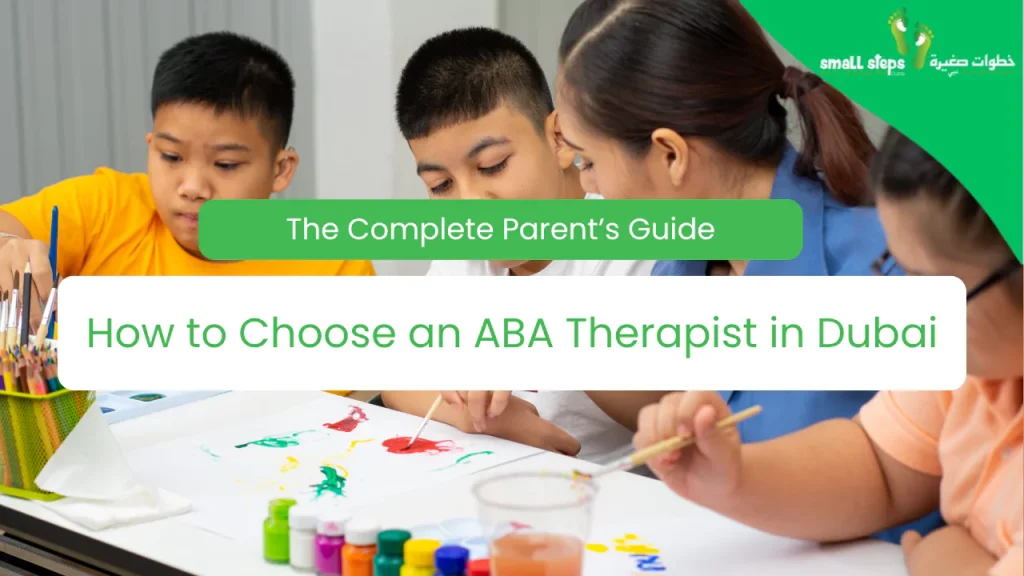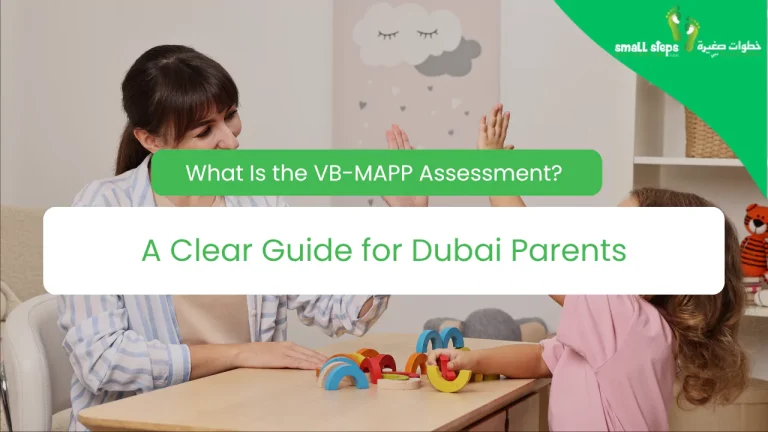
How to Choose an ABA Therapist in Dubai: The Complete Parent’s Guide
Confused by too many choices? In a city with over 50 ABA centers, knowing where to start can feel overwhelming. This guide walks you through each step—no jargon, no pressure—just clear, practical advice to help you find the right therapist for your child.
Understanding ABA Therapy in Dubai’s Context
Dubai’s multicultural environment means top ABA providers adapt to diverse family needs. Quality therapists respect cultural values, offer bilingual support, and coordinate with schools and local authorities. When shopping for services, remember that cultural sensitivity and language flexibility are as important as credentials.
What Qualifications Should an ABA Therapist Have?
Applied Behavior Analysis (ABA) is a specialized field. To ensure high-quality care, look for these must-haves:
- Board Certified Behavior Analyst (BCBA) :
The BCBA is the “architect” of your child’s program. They design assessments, set goals, and train other staff. A BCBA must hold a valid certification and renew it through ongoing education. - Registered Behavior Technician (RBT) or Applied Behavior Analysis Technician (ABAT) :
These are the hands-on therapists who work directly with your child. They deliver one-on-one sessions but must operate under BCBA supervision (at least 5% of total service hours). - Dubai Licensing & Training
- DHA License: Every practicing therapist must be licensed by the Dubai Health Authority.
- KHDA-Approved ABA Training: Verify completion of locally recognized ABA training courses.
- Experience & Language Skills
- Aim for therapists with at least four years of experience working with children on the autism spectrum.
- Bilingual fluency in English and Arabic is highly beneficial for effective communication with multicultural families.
The Step-by-Step Selection Process
Phase 1: Initial Research (Week 1)
- Shortlist 3–5 centers based on location, reputation, and online reviews.
- Verify credentials via the DHA professional registry and KHDA training lists.
- Check parent forums and social media groups for firsthand experiences.
- Schedule brief phone consultations to clarify services and availability.
Phase 2: Center Visits & Assessments (Weeks 2–3)
- Facility Tour: Observe therapy rooms in action—look for safety features and sensory-friendly design.
- Meet the Team: Speak with the BCBA, RBTs, and support staff. Notice how they interact with children and answer your questions.
- Initial Assessment Consultation: Understand their evaluation process and ask for sample progress reports.
- Parent Interview: Ensure they value your input and explain how you’ll participate in goal-setting.
Phase 3: Decision Making (Week 4)
Compare your top choices on these criteria:
- Program philosophy and individualization
- Staff qualifications and turnover rates
- Scheduling flexibility and location convenience
- Transparent cost structure and insurance support
Key Questions to Ask Before Starting ABA
Download or print this list to take with you:
- “How will you assess my child’s current abilities and design goals?”
- “How often will a BCBA supervise my child’s sessions?”
- “What data do you collect, and how do you share progress reports?”
- “What do you expect from me at home to reinforce skills?”
- “How do you handle challenging behaviors or lack of progress?”
- “Can I observe sessions, live or recorded?”
- “What is your policy on missed sessions and make-ups?”
- “How do you coordinate with schools and other therapists?”
Visiting ABA Centers: What to Look For
The Physical Environment
- Green Flags: Clean, organized, child-friendly spaces; quiet areas for focused work; sensory-friendly lighting.
- Red Flags: Cluttered rooms; lack of safety measures; overstimulating background noise.
Staff & Interaction
- Green Flags: Staff greet children warmly, explain methods clearly, and include parents in discussions.
- Red Flags: Rushed sessions; scripted greetings; dismissive responses to questions.
Program Quality Indicators
- Data Collection: Therapists record session outcomes in real time using charts or digital apps.
- Individualization: Customized goals visible for each child rather than one standard plan for everyone.
- Positive Reinforcement: Use of praise, tokens, or preferred items rather than punitive measures.
Reviewing Success Stories and References
Not all testimonials are equal. Look for stories with measurable outcomes:
“After three months, Ahmed said ‘help me’ without prompting, and tantrums dropped by 80%.”
Ask for two current families with chizldren similar to yours. Schedule 10–15-minute calls to learn about real challenges and genuine progress.
Understanding Red Flags vs. Green Flags
Red Flags:
- Punishment-based methods or focus on compliance over learning
- One-size-fits-all programs with no customization
- Hidden or unclear fees and contracts
- High staff turnover and lack of ongoing training
Green Flags:
- Individualized, data-driven programs with regular reviews
- Collaboration with speech, occupational therapy, and school teams
- Transparent policies on costs, scheduling, and progress reporting
- Low turnover, ongoing professional development, and cultural competence
Practical Tips for Parents in Dubai
- Traffic & Scheduling: Book sessions just after school ends or mid-morning to avoid rush-hour jams. Verify parking availability.
- Cultural Fit: Confirm the team respects your family’s traditions, language, and routines—ask about Ramadan schedules and holiday closures.
- Insurance Tips: Most UAE plans don’t directly cover ABA. Major insurers (Daman, Neuron, Orient) may reimburse—always get pre-approval and save receipts.
- Build a Support Network: Join local parent support groups, expat forums, and school inclusion committees for shared tips and emotional backing.
Case Example: Ahmed’s Journey
A British expat family arrived in Dubai when their four-year-old son, Ahmed, faced daily meltdowns and struggled to communicate. They connected with our center’s BCBA, who designed a bilingual program—mixing English and Arabic—to suit Ahmed’s home and school routines. Within three months, Ahmed began saying “help me” and “thank you” unprompted, and his meltdowns dropped by 80%.
This story shows how a tailored, culturally aware approach can transform a child’s development—and why choosing the right therapist truly matters.
Your ABA Therapist Selection Toolkit Includes
- ABA Center Evaluation Checklist
- Complete Questions to Ask list
- Progress Tracking Forms Template for home use
Download ABA Therapist Selection Toolkit Now
Ready to find the right ABA therapist for your child? No jargon. No pressure. Just a friendly conversation about what your family needs.
Book your free, no-pressure consultation today, let’s connect.
Frequently Asked Questions
How often should my child attend ABA therapy?
Most children benefit from 15–25 hours per week. Start at a manageable level and adjust based on progress and family schedule.
Can I observe therapy sessions?
Yes. Top centers offer live viewing rooms or recorded videos to help you reinforce learning at home without distracting your child.
What if my child isn’t making progress?
Request a comprehensive program review. Goals may need adjusting, or additional therapies (speech, OT) might be added.
Will ABA work for bilingual children?
Absolutely. Quality providers adapt goals and methods for multiple languages, using cultural preferences as motivators.
How do I switch therapists if needed?
Check your center’s policy on staff changes and ask for a transition plan to ensure continuity of care.






